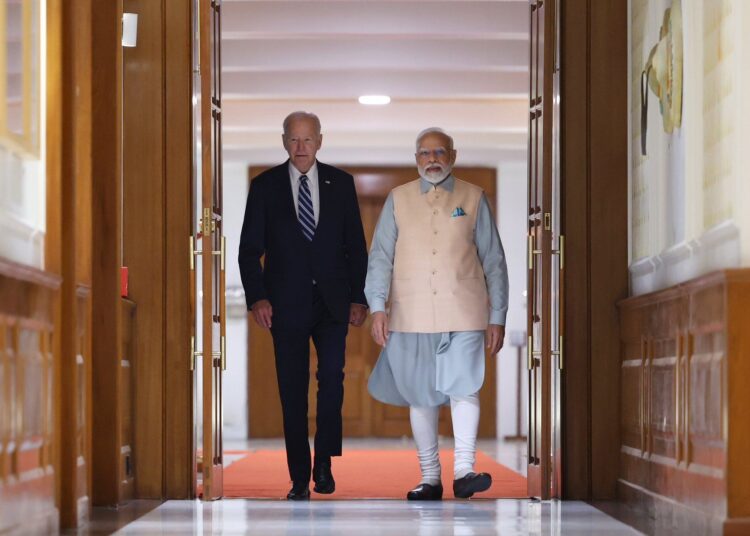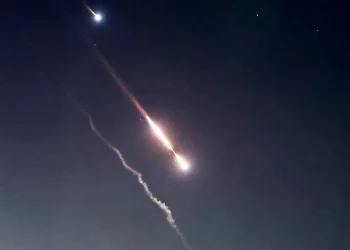Modi Government’s penchant for pageantry turned G20 Summit into a jamboree, and the announcement of the India-Europe Transit Corridor must be seen through the same lens.
By Saurabh Kumar Shahi
In a G20 Summit that mostly remained a damp squib, there was one announcement that grabbed the eyeballs. Or, more accurately, that announcement was made to grab eyeballs. Prime Minister Narendra Modi of India announced the India-Middle East-Europe mega economic corridor that includes India, the UAE, Saudi Arabia, Israel, the European Union and the US.
“Today we all have reached an important and historic partnership. In the coming times, it will be a major medium of economic integration between India, West Asia and Europe. The corridor will give a new direction to connectivity and sustainable development of the entire world,” Modi was quoted as saying.
While the mostly pliant Indian media let out a collective orgasm, scrutiny of the proposed corridor and the way it was proposed leaves much to be desired.
For starters, there is little or no argument in favour of such a corridor. Historically, economic corridors have had one of the three raison d’etre. Either they have an economic raison d’etre in that it links hitherto unlinked manufacturing powerhouse to a consumer powerhouse. Or, they are a means to consume excess capacity in construction. Or the strategic consideration in that it solves the strategic Gordian Knot in one way or the other. Let’s dissect this corridor and see what is it trying to achieve.
Is this corridor linking hitherto unlinked manufacturing powerhouse to a consumer powerhouse? Far from it. Western Indian ports are already connected to Europe via the Suez Canal. It is a dependable and tried and tested route that has served India well. As far as the Middle East is concerned, geography has assured that it already has the shortest, fastest and cheapest connectivity with India. So, what is this new corridor achieving?
One argument is that the West’s decoupling from China means that India will take its place as the next manufacturing hub and that this corridor is being proposed keeping the future in mind. This is a specious argument with little basis in reality. Yes, the US is decoupling from China. But are the industries shifting to India? The answer is a resounding no. As China rises in the value chain, its low-cost manufacturing is indeed shifting, but it is shifting to other manufacturing powerhouses such as Vietnam, Thailand, Mexico and Bangladesh. And while the US is seeing a fall in imports from China, it has seen a massive uptick in imports from the aforementioned new manufacturing hubs. And these new manufacturing hubs are seeing massive imports from China. A basic degree in economics can tell you what is happening here. This means China is still exporting essential components. It’s only that these components are now being assembled at these new manufacturing hubs which has lower labour costs. The products are then exported to the US with the “Made in Mexico” labels making Americans feel good about themselves. So, if India is not that new manufacturing hub, what will it export through the proposed corridor?
This is not to say that manufacturing will not grow in India. It will. India’s cheap labour and now-diluted labour rights as well as its big internal market will mean that some low-cost manufacturing will shift here. However, have our existing port infrastructure reached its capacity? No, they have not. The TEU Capacity of Indian ports is underutilised. Why would you invest in new ones when the existing TEU Capacity is not being met?
This leaves us with two other aspects of it; cost and time. Let us look at the cost first. Marine Transport is the cheapest mode of transportation available to humans. To give you an example, when a shipload of iPhones is shipped from China to the US, the resultant shipping cost for individual units of iPhones is rounded off to zero. Yes, you read it right, it’s zero. Not even one Cent. No land-based corridor can beat the sea-based trade routes on cost.
One can always ask that if sea-based corridors are the most cost-efficient, why is China investing so heavily in the Belt & Road Initiative? This brings us to the third factor; time.
China is investing in BRI because it ticks all the aforementioned boxes of raison d’etre. China has excess construction capacity and it is exporting this excess capacity by building infrastructure outside of China. It is also a manufacturing powerhouse. Therefore it needs new routes to export goods and import raw materials from newly emerging consumer markets such as Southeast Asia, the Middle East, Africa and Latin America. It has strategic concerns as well because it knows that its rivals will likely try to block the Strait of Malacca, its lifeline, in case of a conflict. It is therefore distributing eggs in different baskets. Lastly, the famous Chinese efficiency assures that what Chinese manufacturers lose in terms of cost by shifting from sea-based transportation to land-based transportation, they more than makeup in terms of time. Chinese ports and Chinese-operated ports are some of the most efficient ports in the world with the minimum possible Turn Around Time (TAT), Waiting Time (WT) and Burst Time (BT). This means that the transition from its ports to land-based corridors is seamless and takes the minimal time possible. The application of 5G has further reduced it, something other countries are still in the planning phase of.
Now look at the aspect of time in the India-Europe Corridor. Pro-Western think tanks have done some very crude back-of-the-paper calculations to suggest that it will decrease the time for an average container to make the journey from India to Greece (the landing point at the EU) to 10 days from the existing 17 days. This is not only optimistic but it throws all the usual caution to the wind. For starters, it jumps from the sea route to the land route to again sea route a couple of times. This is a super inefficient way of transportation. Leave alone a gain of seven days, I am willing to stick my neck out that it will add a couple of days to the exiting timeline via the Suez Canal. The BT and TAT here will be horrible. Clearly, no due diligence, let alone testing, was done before proposing this corridor.
Let’s look at the exporting the capacity argument. India is not a construction powerhouse. Our railways, unlike the Chinese one, is not exactly known for taking international orders. While we have built a few construction marvels here and there they have almost all had cost and time overruns. We are definitely not an expert on constructing railways in the desert and neither are Saudis or UAE. The less said about the US the better. Its railway infrastructure matches the countries at the lower end of the Third World. Even if by some inner determination these countries join ranks and start constructing railways in the desert, the super-inefficient construction will demand so much investment that it will offset whatever little transportation time it shaves off from the existing corridor.
This leaves us with the last aspect; strategic considerations. This is even more hilarious. Mandarins in New Delhi have had the habit of hyping up projects which they believe have the political raison d’etre. One case in point is India’s investment in the North South Transit Corridor (NSTC) in general and Iran’s Chabahar Port in particular. India hitched its horses in both these projects because it wanted to bypass Pakistan. It was a political reasoning. It made little economic sense to India except for some of the mining contracts it was hoping to bag in western Afghanistan. Once those mining contracts vanished with the victory of the Taliban in the Afghan Civil War, India’s role in both these projects was over. And this is the reason both Chabahar and NSTC have had so many false starts and have yet not come to fruition. In the case of NSTC, at least the Iranians and Russians had both economic as well as strategic considerations what with the crippling Western sanction imposed on them.
In the case of the India-Europe Corridor, there are no such strategic considerations. In fact, the corridor will remain a hostage to the American and Israeli shenanigans in the Persian Gulf region. Even a limited conflict will mean that the route to UAE shall be in jeopardy. It unknots no Gordian Knot that way. If at all, it adds a new one to it.
So why was New Delhi desperate to announce it? Even more desperate than the US. Well, for this, one has to look inward. For starters, Modi wanted to let the impression out that it was a successful summit. General Elections in India are less than a year away. In the absence of tangible gains, this chimaera of a corridor can be used to tom-tom not only economic progress but also as a dog whistle to the more base instincts of his voters who want Modi to teach China a lesson. So, if he is not able to free land occupied at the border, this apparent competitor to BRI is how he is getting back at Beijing. Then there is a small issue of pro-Modi business magnate Gautam Adani who funds his campaign. He already owns the port in Haifa, and the Greek PM was on the record saying that the Modi Government was trying hard to convince Athens to award one of its ports to Adani. That both these ports are part of the proposed corridor should ring some bell.
However, as far as the logical explanations go, this corridor has no raison d’etre.
The views expressed in this article are those of the author and do not necessarily reflect the positions of Iran Nuances.






